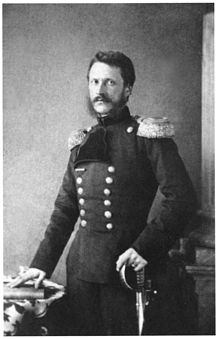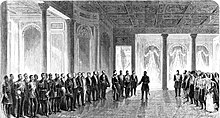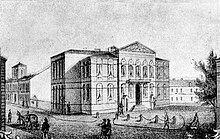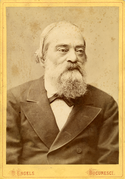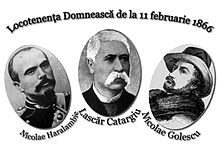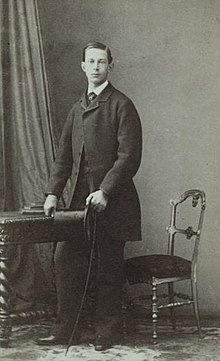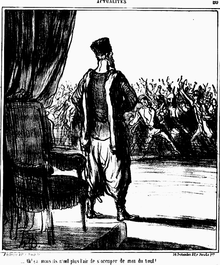
Hohenzollern-Sigmaringen was a principality in southwestern Germany. Its rulers belonged to the senior Swabian branch of the House of Hohenzollern. The Swabian Hohenzollerns were elevated to princes in 1623. The small sovereign state with the capital city of Sigmaringen was annexed to the Kingdom of Prussia in 1850 following the abdication of its sovereign in the wake of the revolutions of 1848, then became part of the newly created Province of Hohenzollern.
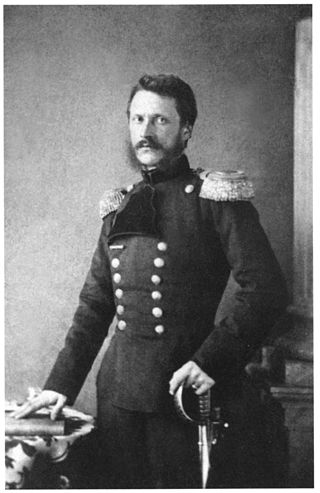
Alexandru Ioan Cuza was the first domnitor (Ruler) of the Romanian Principalities through his double election as prince of Moldavia on 5 January 1859 and prince of Wallachia on 24 January 1859, which resulted in the unification of the two states. He was a prominent figure of the Revolution of 1848 in Moldavia. Following his double election, he initiated a series of reforms that contributed to the modernization of Romanian society and of state structures.
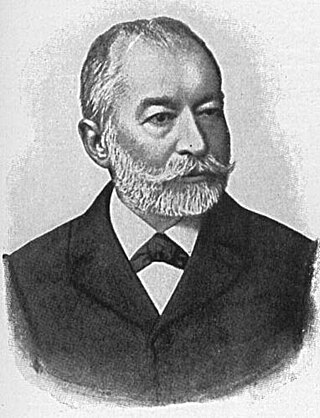
Dimitrie Sturdza was a Romanian statesman and author of the late 19th century, and president of the Romanian Academy between 1882 and 1884.

Ion Constantin Brătianu was one of the major political figures of 19th-century Romania. He was the son of Dincă Brătianu and the younger brother of Dimitrie, as well as the father of Ionel, Dinu, and Vintilă Brătianu. He also was the grandfather of poet Ion Pillat.

Mihail Kogălniceanu was a Romanian liberal statesman, lawyer, historian and publicist; he became Prime Minister of Romania on October 11, 1863, after the 1859 union of the Danubian Principalities under Domnitor Alexandru Ioan Cuza, and later served as Foreign Minister under Carol I. He was several times Interior Minister under Cuza and Carol. A polymath, Kogălniceanu was one of the most influential Romanian intellectuals of his generation. Siding with the moderate liberal current for most of his lifetime, he began his political career as a collaborator of Prince Mihail Sturdza, while serving as head of the Iași Theater and issuing several publications together with the poet Vasile Alecsandri and the activist Ion Ghica. After editing the highly influential magazine Dacia Literară and serving as a professor at Academia Mihăileană, Kogălniceanu came into conflict with the authorities over his Romantic nationalist inaugural speech of 1843. He was the ideologue of the abortive 1848 Moldavian revolution, authoring its main document, Dorințele partidei naționale din Moldova.
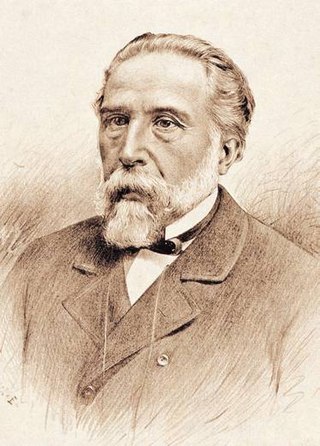
Ion Ghica was a Romanian statesman, mathematician, diplomat and politician, who was Prime Minister of Romania five times. He was a full member of the Romanian Academy and its president many times. He was the older brother and associate of Pantazi Ghica, a prolific writer and politician.

Grigore Mihail Sturdza, first name also Grigorie or Grigori, last name also Sturza, Stourdza, Sturd̦a, and Stourza, was a Moldavian, later Romanian soldier, politician, and adventurer. He was the son of Prince Mihail Sturdza, a scion of ancient boyardom, and, during the 1840s, an heir apparent to the Moldavian throne, for which he was known throughout his later life as Moldavia's Beizadea. A rebellious youth famous for his feats of strength, he set up his own private militia which he used to corner the Moldavian grain trade, and entered a legal battle with Sardinian retailers. In 1845, he defied his father, and French law, by seeking to marry the much older, already married Countess Dash, and barricaded himself with her at Perieni. By 1847, Grigore had been reintegrated into the Moldavian establishment, and, as a general in the Moldavian princely militia, personally handled repression during the attempted revolution of April 1848. During these events, the Beizadea became personal enemies with three future statesmen—Alexandru Ioan Cuza, Mihail Kogălniceanu, and Manolache Costache Epureanu.
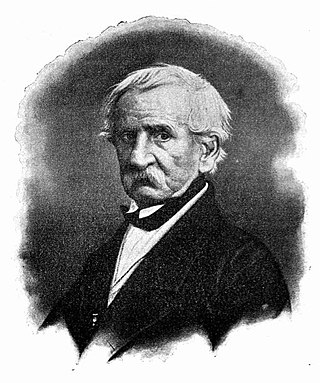
Gheorghe Asachi was a Moldavian, later Romanian prose writer, poet, painter, historian, dramatist, engineer, border maker, and translator. An Enlightenment-educated polymath and polyglot, he was one of the most influential people of his generation. Asachi was a respected journalist and political figure, as well as active in technical fields such as civil engineering and pedagogy, and, for long, the civil servant charged with overseeing all Moldavian schools. Among his leading achievements were the issuing of Albina Românească, a highly influential magazine, and the creation of Academia Mihăileană, which replaced Greek-language education with teaching in Romanian. His literary works combined a taste for Classicism with Romantic tenets, while his version of the literary language relied on archaisms and borrowings from the Moldavian dialect.
Jean Alexandre Vaillant was a French and Romanian teacher, political activist, historian, linguist and translator, who was noted for his activities in Wallachia and his support for the 1848 Wallachian Revolution. A Romantic nationalist and Freemason, he was an associate of the liberal faction in both Wallachia and Moldavia, as well as a collaborator of Ion Heliade Rădulescu, Ion Câmpineanu, Mitică Filipescu, and Mihail Kogălniceanu.
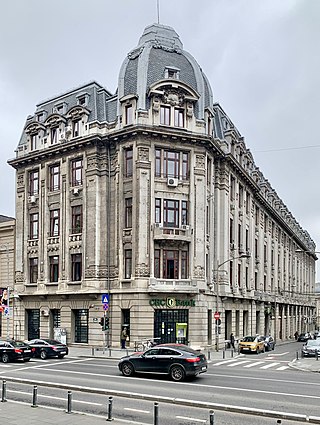
The Bank of Romania, from 1903 Bank of Roumania Ltd., was Romania's oldest bank and its largest financial institution in the late 19th century, created and controlled by the Ottoman Bank until its nationalization in 1948.
The Moldavian Revolution of 1848 is the name used for the unsuccessful Romanian liberal and Romantic nationalist movement inspired by the Revolutions of 1848 in the principality of Moldavia. Initially seeking accommodation within the political framework defined by the Regulamentul Organic, it eventually rejected it as imposed by foreign powers and called for more thorough political reforms. Led by a group of young intellectuals, the movement was mostly limited to petitioning and constitutional projects, unlike the successful uprising taking place later that year in neighbouring Wallachia, and it was quickly suppressed. This was despite the fact that the Moldavian revolutionaries were more moderate and willing to compromise in their demands for reforms than their Wallachian counterparts, as Moldavian political and social life continued to be dominated by a landed, conservative aristocracy, with the middle class still embryonic.
Raoul V. Bossy (1894–1975) was a Romanian diplomat.

The United Principalities of Moldavia and Wallachia, commonly called United Principalities or as Wallachia and Moldavia, was the personal union of the Principality of Moldavia and the Principality of Wallachia. The union was formed 5 February [O.S. 24 January] 1859 when Alexandru Ioan Cuza was elected as the Domnitor of both principalities. Their separate autonomous vassalage in the Ottoman Empire continued with the unification of both principalities. On 3 February [O.S. 22 January] 1862, Moldavia and Wallachia formally united to create the Romanian United Principalities, the core of the Romanian nation state.

Alexandru Al. Ioan Cuza was a Romanian aristocrat and politician. He was the eldest of the sons adopted by Domnitor Alexandru Ioan Cuza and his consort, Elena Rosetti-Cuza. Public opinion and historians generally agree that both Cuza brothers were Cuza's natural sons from his mistress Maria Catargi-Obrenović, though another hypothesis has them as born to Maria from her liaison with Cezar Librecht, the Postmaster General and spy chief. His biological and his adoptive mother both belonged to the boyar aristocracy of Moldavia. Through Catargi, Alexandru and Dimitrie were half-brothers of Milan I Obrenović, the King of Serbia, and of General Radu Catargi. During his brief political activity, Alexandru was repeatedly described as a Russophile or more specifically an agent of the Russian Empire, resembling in this Maria and her father, Costin Catargi.
Antisemitism in Romania manifested in the country's legislation during its early times following Romania's foundation as a modern state in the mid-19th century. Antisemitism increased considerably in Romania in the late-1930s and the 1940s, culminating with The Holocaust in Romania.

George Barbu Știrbei or Știrbeiŭ, also known as Gheorghe, Georgie, or Iorgu Știrbei, was a Wallachian-born Romanian aristocrat and politician who served as the Minister of Foreign Affairs from July 15, 1866, until February 21, 1867. He was the eldest son of Barbu Dimitrie Știrbei, Prince of Wallachia, and the nephew of his rival, Gheorghe Bibescu; his younger siblings included the landowner and industrialist Alexandru B. Știrbei. Educated in France, he returned to Wallachia during his father's princely mandate, as a Beizadea and aspiring politician. Fleeing his country during the Crimean War, he served the French Empire before returning home to become Wallachian Minister of War and Spatharios. He is remembered for reforming the Wallachian militia during the remainder of Prince Barbu's term.

Alexandru Papadopol-Calimah was a Moldavian-born Romanian historian, jurist, and journalist, who served as the Minister of Foreign Affairs and Minister of Culture of the Principality of Romania. As a maternal member of the Callimachi family, he had high aristocratic origins, but was a commoner on his father's side; he spent most of his life in the Moldavian town of Tecuci, whose history was a focus of his academic activity. He joined the Moldavian civil service in 1855, as a Spatharios in service to Prince Grigore Alexandru Ghica, and participated in applying Ghica's reforms. Papadopol-Calimah consequently discarded his Greek-and-Hellenized background to become an exponent of Romanian nationalism, supporting a political unification between Moldavia and Wallachia, which came about in 1859. He first served in the unified administration established by Domnitor Alexandru Ioan Cuza, rising from Prefect to State Council member, then to cabinet minister. Throughout his career, he remained closely aligned with Vasile Alecsandri and Mihail Kogălniceanu, and later also with Bogdan Petriceicu Hasdeu.

Alecu Beldiman, common rendition of Alexandru Beldiman, also known as Alecul or Aleco Beldiman, was a Moldavian statesman, translator and poet, one of the forerunners of Romanian nationalism. A scion of the boyar elite, he was the eldest son of Vornic Gheorghe Beldiman, and the nephew-in-law of chronicler Enache Kogălniceanu. Alecu himself held high commission in the Moldavian military forces and bureaucracy, but secretly resented the Phanariote regime which had awarded them. He may have affiliated with a loose group known as the "National Party", championing an alliance between Moldavia's independence from the Ottoman Empire and support for the French Republic.

Gavril Istrati, or Istrate, was a Moldavian boyar who mounted military resistance to the Filiki Eteria during the Greek War of Independence. Probably hailing from the yeomanry, he spent a while servicing the more powerful boyar Teodor "Frederic" Balș, and became a Paharnic in Botoșani city, near Moldavia's border with the Austrian Empire. An exponent of Romanian nationalism and a presumed ally of the Austrians, he participated in the boyar conspiracy which liberated Botoșani County, though his troops disbanded without making further gains; his effort matched a similar counter-rebellion in neighboring Wallachia.
Ludovic Steege was a Moldavian, later Romanian physician, diplomat, judge and politician.



